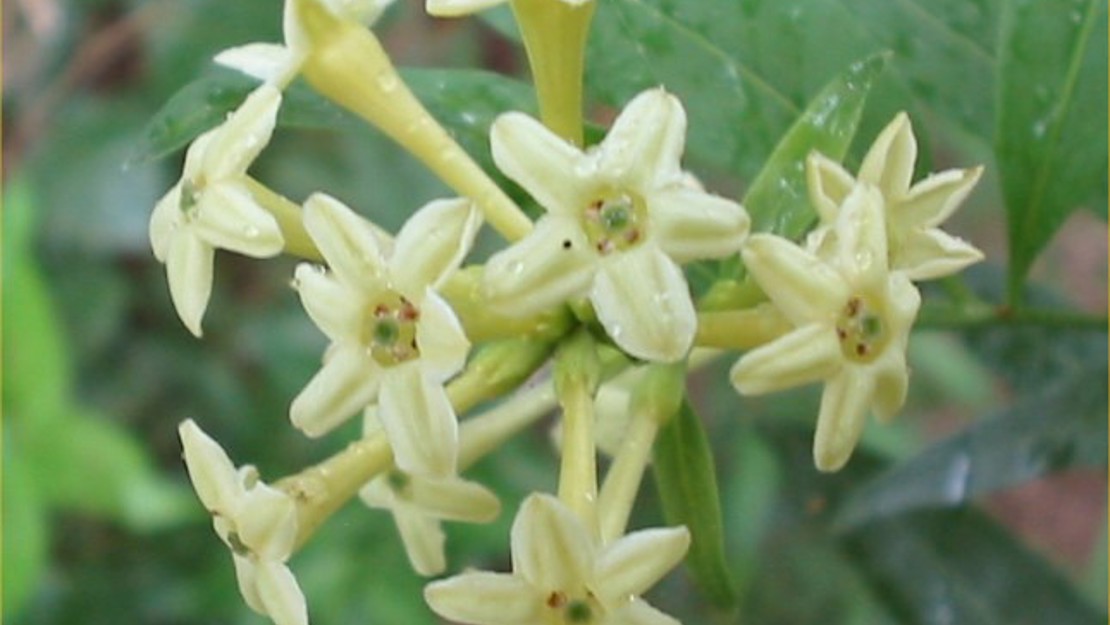Cestrum parqui
Green cestrum
Also known as:
Green poison berry, ink berry, chilean cestrum, willow-leaved jessamine
Family: Solanaceae
Origin: South America

Regional Pest Management Plan (RPMP) status
- National Pest Plant Accord Species
- Whole region — Eradication
General description
Deciduous or semi-evergreen, woody shrub < 3 m tall. Stems are green and brittle. Leaves are hairless, light green, < 12 cm long, alternate and foul-smelling when crushed, with pointed tips and wavy margins. Flowers are pungent, tubular, yellow/green and borne in clusters. Berries are small, black and egg-shaped, and stain skin purple when crushed.
What you need to know
To help protect our environment:
- You must not breed, distribute, release or sell green cestrum. As green cestrum is a National Pest Plant Accord species, these restrictions apply within the Auckland region and across the whole of New Zealand.
- You must not plant green cestrum within the Auckland region.
Auckland Council will control green cestrum at all sites where it is known to occur.
If you see green cestrum anywhere in the Auckland region, please report it to Auckland Council at pestfree@aucklandcouncil.govt.nz.
Habitats
Forest, scrub, riparian habitats, alluvial flats.
Dispersal
Seeds dispersed by birds and water. Vegetative spread from suckering and root fragments. Human-mediated dispersal through dumping of garden waste and movement of contaminated soil.
Impact on environment
Potential to outcompete native vegetation. Highly poisonous when consumed.
Control
Recommended approaches
Do not attempt to undertake control of this species. Please report to Auckland Council.
Caution: When using any herbicide or pesticide please read the label thoroughly to ensure that all instructions and safety requirements are followed.
Microsoft.CSharp.RuntimeBinder.RuntimeBinderException: 'Newtonsoft.Json.Linq.JValue' does not contain a definition for 'macroAlias' at CallSite.Target(Closure, CallSite, Object) at System.Dynamic.UpdateDelegates.UpdateAndExecute1[T0,TRet](CallSite site, T0 arg0) at CallSite.Target(Closure, CallSite, Object) at AspNetCore.Views_Partials_grid_editors_macro.ExecuteAsync() at Microsoft.AspNetCore.Mvc.Razor.RazorView.RenderPageCoreAsync(IRazorPage page, ViewContext context) at Microsoft.AspNetCore.Mvc.Razor.RazorView.RenderPageAsync(IRazorPage page, ViewContext context, Boolean invokeViewStarts) at Microsoft.AspNetCore.Mvc.Razor.RazorView.RenderAsync(ViewContext context) at Microsoft.AspNetCore.Mvc.ViewFeatures.HtmlHelper.RenderPartialCoreAsync(String partialViewName, Object model, ViewDataDictionary viewData, TextWriter writer) at Microsoft.AspNetCore.Mvc.ViewFeatures.HtmlHelper.PartialAsync(String partialViewName, Object model, ViewDataDictionary viewData) at AspNetCore.Views_Partials_grid_editors_base.ExecuteAsync() in C:\home\site\wwwroot\Views\Partials\grid\editors\base.cshtml:line 6



